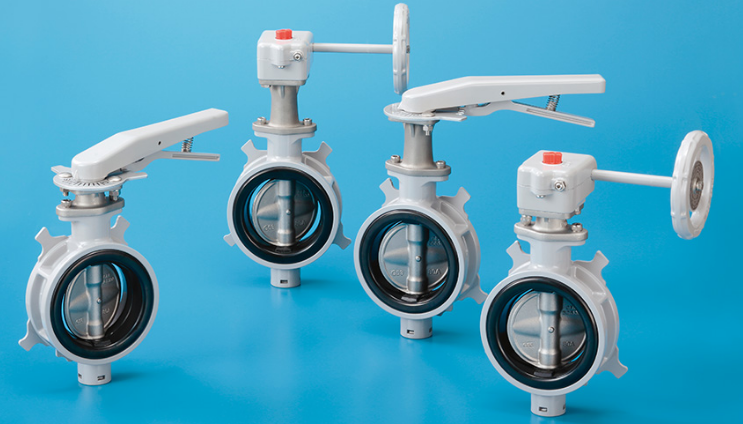+86 15858532562
Views: 9 Author: Site Editor Publish Time: 2024-05-14 Origin: Site








Butterfly valves can be divided into pneumatic butterfly valves, electric butterfly valves, manual butterfly valves, etc. Butterfly valves are a kind of valve that uses a circular butterfly plate as an opening and closing part and rotates with the valve stem to open, close and regulate the fluid channel. The characteristics of the industrial butterfly valve are that it can withstand high temperatures, has a high applicable pressure range, has a large nominal diameter, the valve body is made of carbon steel, and the sealing ring of the valve plate uses a metal ring instead of a rubber ring. Large high-temperature butterfly valves are manufactured by welding steel plates and are mainly used in flue ducts and gas pipelines for high-temperature media.
Butterfly valves can be divided into offset plate type, vertical plate type, inclined plate type and lever type according to their structural forms. According to the sealing form, it can be divided into two types: relatively sealed type and hard sealing type. The soft seal type usually uses a rubber ring seal, and the hard seal type usually uses a metal ring seal. According to the connection type, it can be divided into flange connection and wafer connection; according to the transmission mode, it can be divided into manual, gear transmission, pneumatic, hydraulic and electric.
1. Advantages of butterfly valve
a. Opening and closing is convenient, fast, labor-saving, has small fluid resistance, and can be operated frequently.
b. Simple structure, small size and light weight.
c. It can transport mud and minimize liquid accumulation at the pipe mouth.
d. Under low pressure, good sealing can be achieved.
e. Good adjustment performance.

2. Disadvantages of butterfly valve
a. The operating pressure and operating temperature range are small.
b. Poor sealing.
3. Butterfly valve installation and maintenance
a. During installation, the valve disc should stop in the closed position.
b. The opening position should be determined according to the rotation angle of the butterfly plate.
c. For butterfly valves with a bypass valve, the bypass valve should be opened before opening.
d. Installation should be carried out according to the manufacturer's installation instructions. Butterfly valves with heavy weight should be installed on a solid foundation.
e. The butterfly plate of the butterfly valve is installed in the diameter direction of the pipe. In the cylindrical channel of the butterfly valve body, the disc-shaped butterfly plate rotates around the axis with a rotation angle between 0° and 90°. When it rotates to 90°, the valve is fully open.
f. If the butterfly valve is required to be used as flow control, the main thing is to correctly select the size and type of the valve. The structural principle of butterfly valve is especially suitable for making large diameter valves. Butterfly valves are not only widely used in general industries such as petroleum, gas, chemical industry, and water treatment, but are also used in the cooling water system of thermal power stations.
g. Commonly used butterfly valves include wafer butterfly valves and flange butterfly valves. Wafer-type butterfly valves use studs to connect the valve between two pipe flanges. Flange-type butterfly valves have flanges on the valve, and bolts are used to connect the flanges at both ends of the valve to the pipe flanges.
h. The butterfly plate of the butterfly valve is installed in the diameter direction of the pipe. In the cylindrical channel of the butterfly valve body, the disc-shaped butterfly plate rotates around the axis with a rotation angle between 0° and 90°. When it rotates to 90°, the valve is fully open.